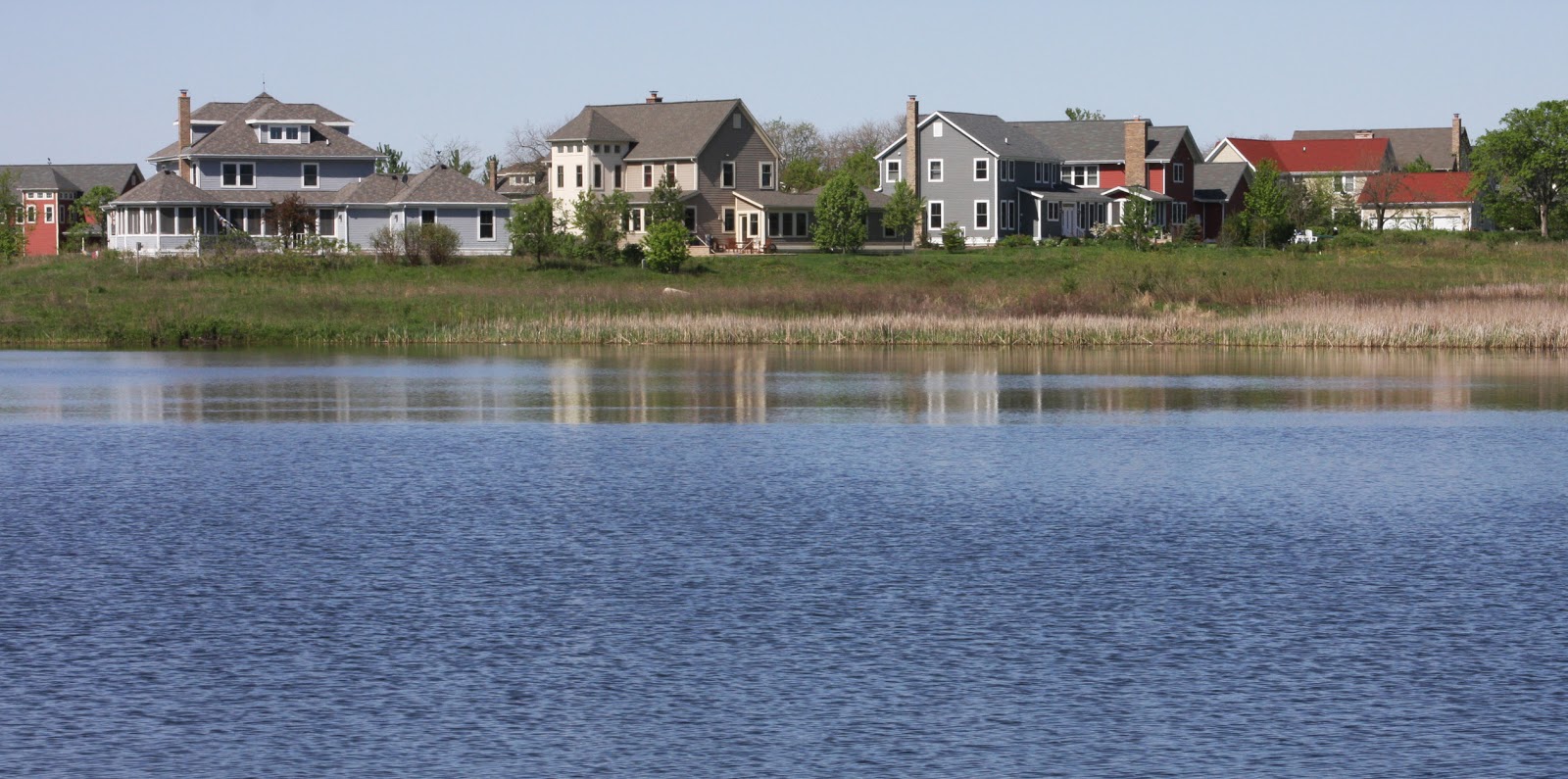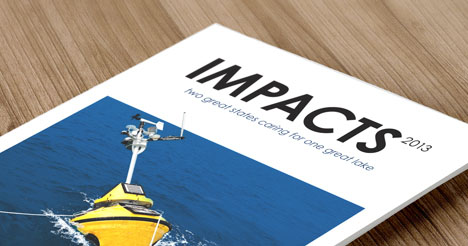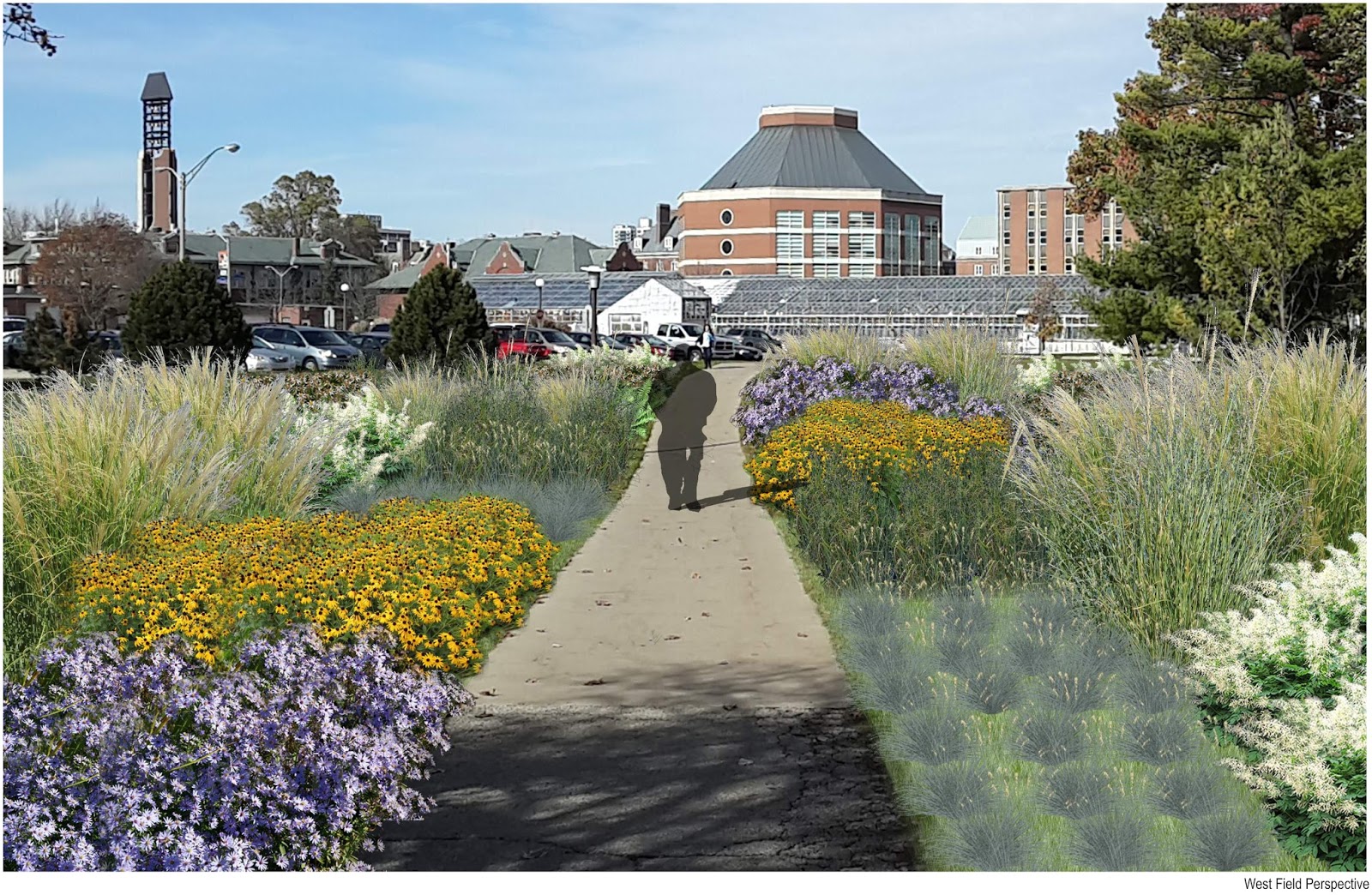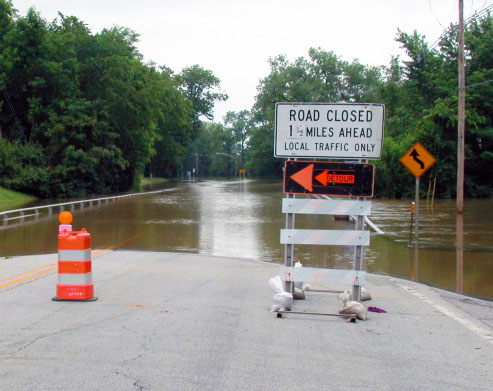February 17th, 2015 by iisg_superadmin
 The mission of NASA’s newest Earth satellite may sound simple, but its findings could have huge impacts across the world and right here in the Midwest. When it launched last month, the Soil Moisture Active Passive, or SMAP, began a three-year project to collect data on a key player in the water and carbon cycles that determine plant growth and drive weather patterns: soil moisture. IISG’s Michael Brennan has the details.
The mission of NASA’s newest Earth satellite may sound simple, but its findings could have huge impacts across the world and right here in the Midwest. When it launched last month, the Soil Moisture Active Passive, or SMAP, began a three-year project to collect data on a key player in the water and carbon cycles that determine plant growth and drive weather patterns: soil moisture. IISG’s Michael Brennan has the details. As the name suggests, soil moisture data tells us how much water the soil can absorb and store. These measurements play a crucial role in everything from knowing when to plant crops to community flood planning. If there isn’t enough moisture in the soil, plants can’t take root and grow. And if the soil’s storage capacity has been maxed out, any additional rain or snowfall will runoff into nearby rivers and lakes—carrying nutrients and contaminants with it.
Due to the earth’s vast landscape, tracking and assessing soil moisture is extremely challenging, especially in remote locations. In fact, a lack of detailed soil moisture data has historically been a significant hurdle for community planners, farmers, and climate and weather forecasters. SMAP has the potential to change all of that. Its microwave radiometer and radar instruments will give us the most accurate, high-resolution moisture data ever collected from space. And its orbital path will ensure we have measurements from pole to pole.
NASA has said that it expects to release the first set of measurements within nine months, with fully-validated data expected in 15 months. With these numbers in hand, farmers will be able to hone in on the ideal time for planing and harvesting and community decision makers will be able to pinpoint their flood risk—and plan accordingly. The data will also tell scientists how much carbon is being stored in or released by plants, allowing them to refine the climate models that we rely on to predict and prepare for the impacts of climate change.
The NASA space program is responsible for a lot of technological and scientific advancements, but SMAP may be its greatest contribution yet.
For more information on SNAP for video showing its launch and orbit, visit smap.jpl.nasa.gov/.
December 18th, 2014 by iisg_superadmin
Earlier this week, we celebrated the 40thanniversary of the Safe Drinking Water Act (SDWA). This law allows us to feel safe taking a sip from a water fountain or filling a glass from the tap virtually anywhere in the United States. It’s undeniably a feat worth celebrating, but it’s not to say that delivering safe drinking water to millions of Americans is without its challenges—as this year’s events in Charleston, West Virginia and Toledo, Ohio prove.
One of the largest challenges lies in the system itself. Much of our drinking water infrastructure is more than a century old and in desperate need of repair. Leaky pipes and broken water mains cost the country around 6 billion gallons of water every day—roughly 16 percent of our daily use. In the Great Lakes region alone, the annual water loss is enough to supply 1.9 million Americans with safe drinking water for a year.
In northeastern Illinois, the cost of leaky pipes is heightened by overtaxed aquifers and legal limits on how much water can be pulled from Lake Michigan. And as the region’s population grows, there is increasing concern that demand for clean water will outpace supply if communities don’t take steps to encourage conservation, including adjusting water prices to reflect the real costs.
Treating water to meet national standards poses its own problems. In fact, some of the chemicals used to treat contaminants regulated under SDWA have themselves proven toxic under the right conditions.
Water suppliers today also face the question of how to deal with emerging contaminants like pharmaceuticals and chemicals found in personal care products. Our wastewater and drinking water systems weren’t designed with these in mind and often don’t eliminate them. These chemicals have been found across the country in the rivers and lakes we rely on for fresh water, including Lake Michigan. In fact, a 2008 Associated Press investigation found pharmaceuticals and their byproducts in the drinking water supplies of at least 41 million Americans. They’re present in very small concentrations—too small to be toxic to humans. But the long-term risk to humans is still largely unknown. What is clear is that at least some pose a significant threat to aquatic wildlife.
One of the biggest culprits in lake and river pollution is stormwater runoff
. When it flows into waterways, runoff brings everything with it—from gasoline and trash on city streets to fertilizers and pesticides from lawns and farms. These pollutants and the algae growth they spur on can make it more expensive to treat drinking water. In rare cases, water quality can drop so low that it doesn’t meet federal standards even with treatment. And concerns about pollutant-laden stormwater runoff
continue to grow in the Midwest as storms get bigger.
Fortunately, while public water systems and communities continue to grapple with these and other challenges at a larger scale, there is a lot individuals can do day-to-day. For example, properly disposing of unwanted medicine can help keep pharmaceutical chemicals out of waterways and drinking supplies. Homeowners and gardeners can also adopt natural lawn care practices that reduce water usage and prevent landscape chemicals from washing into nearby rivers and lakes. Even simple practices like washing your car with a bucket and sponge or waiting for a full load to start the washing machine can go a long way towards conserving water.
Visit EPA’s Conserving Water site for more information and tips.
December 1st, 2014 by iisg_superadmin
October brought good news for the residents of Blue Island, IL when the state announced a $1.1 million investment to expand and improve the city’s stormwater management efforts. The bulk of the grant money will go to green infrastructure projects along one of the city’s major roadways, which will reduce flooding, improve local water quality, and beautify the community. Remaining dollars will be used to restore an 11-acre wetland in a northeast detention pond.
The new projects are the latest in a series of local, state, and non-profit programs tackling stormwater runoff in this suburban community. In 2012, IISG teamed up with the Metropolitan Agency for Planning, Illinois EPA, and many others to combat local flooding with native plants, rain gardens, and rain barrels. That year, the Blue Island, Blue Water initiative helped distribute 125 rain barrels to residents and institutions in one of the city’s flood-prone neighborhoods. And roughly 1,000 native plants and trees were planted over the course of the project.
Sea Grant educators and specialists also conducted numerous teacher and homeowner workshops to strengthen community awareness of green infrastructure practices and other strategies for managing and reducing stormwater runoff.

It’s early success led the Illinois Department of Natural Resources to name Blue Island, Blue Water a Millennium Reserve model project in 2012. Lessons learned during the project have also helped inform the new Calumet Stormwater Collaborative, charged with coordinating the region’s stormwater and green infrastructure efforts to maximize the impact of individual city and agency projects.
The collaborative is led by the Metropolitan Agency for Planning and brings together numerous groups interested in stormwater issues, including the Metropolitan Water Reclamation District, the South Suburban Mayors and Managers Association, and IISG.
November 20th, 2014 by iisg_superadmin
Eliana Brown recently joined the Illinois Water Resources Center as an outreach specialist. Prior to starting at IWRC, she worked at University of Illinois at Urbana-Champaign Facilities & Services as the MS4 coordinator and at Illinois EPA as a field engineer. Eliana has a M.S. in environmental engineering and a B.S. in general engineering and marketing from the University of Illinois.
The following is a contributing post from Eliana, who has a passion for rain gardens and green infrastructure:
When you were a university student, did you ever reimagine your campus landscape? Students at the University of Illinois did exactly that as an assignment for Landscape Architecture (LA) 452, Native Plants and Design.
The U of I campus has 84 miles of storm sewer, most of which drain rainwater directly to Boneyard Creek. The LA 452 students designed landscapes with elements that capture water and allow it to soak in on-site to reduce loads to the existing storm sewer and creek. These elements (called green infrastructure) include rain gardens, swales, and green roofs. The Environmental Protection Agency (EPA) sees green infrastructure as a way to create sustainable, resilient communities that improve water quality.
EPA has a competition called the Campus RainWorks Challenge that invites “student teams to design an innovative green infrastructure project for their campus showing how managing stormwater at its source can benefit the campus community and the environment.”
According to Jason Berner, EPA environmental protection specialist, who has been involved with administering the competition, it is a great way for students to see how green infrastructure is related to the larger campus master plan. “It moves us beyond single pilot projects, but at the same time, blends both small and large scale thinking,” he explained.
LA 452 instructor Tawab Hlimi is leading the U of I Campus RainWorks entry. Students in his class helped brainstorm ideas for the entry. One of those ideas is pictured. Student Jiwon
Kim reimagined the grounds at the National Soybean Research Building (which happens to house Illinois-Indiana Sea Grant and the Illinois Water Resources Center). Native plant rain gardens intercept stormwater from the building roof and parking lot. During large storms, the design takes advantage of existing storm sewers by overflowing excess water to them.
Like many cities and universities, the U of I began installing storm sewers more than 100 years ago. Storm sewers benefit cities by draining flooded areas. However, they can overload receiving streams and cause unintended damage. Adding green infrastructure elements to the existing infrastructure helps ensure a healthier ecosystem on-site and downstream.
Per Hlimi, “Through a campus wide application of rain gardens, students hybridized native plantings with a superficial stormwater management strategy to meet multiple objectives: accommodating the ‘first flush’ of frequent storm events through detention, infiltration, and biofiltration, reducing the load on existing subsurface infrastructure, improving the water quality entering into the Boneyard Creek, creating habitat for pollinators, and rendering the campus landscape as living laboratory.”
Perhaps one day in the not too distant future, students won’t have to imagine green infrastructure on campus. They’ll see it.
October 9th, 2014 by iisg_superadmin
 Anjanette Riley was at last week’s Resilient Chicago workshop on climate trends and adaptive planning. She had this to say about the event:
Anjanette Riley was at last week’s Resilient Chicago workshop on climate trends and adaptive planning. She had this to say about the event:
Presentation after presentation, what struck me most is just how much climate change already is and will continue to impact our daily lives—and how interconnected those impacts are. Actually, a quick glance at the agenda was all it took to realize this workshop was going to be about much more than just predictions of yearly rainfall or average temperatures. The speakers were climatologists, public health experts, community planners, and policy specialists. And the participants were just as diverse—educators, urban planners, local officials, and private consultants.
Of course, we did talk about climate concepts and trends. IISG’s Molly Woloszyn kicked things off by making sure we were all on the same page about the difference between weather and climate—short-term changes vs. long-term averages. And throughout the day, Illinois State Climatologist Jim Angel told us that temperatures have risen by roughly 1.5o F over the last century and that we can expect drier summers and more precipitation in winter, spring, and fall.
Much of the day, though, was dedicated to what these changes mean for the people and wildlife that call the Chicago area home. Some impacts are pretty straightforward—you have likely seen them already. Warmer temperatures mean greater strain on an aging energy infrastructure and higher rates of heatstroke. Wetter springs means more stormwater runoff and basement flooding. And summertime droughts could lower crop yields and increase food prices.
Many were hard to see at first glance. As nice as they sound to many of us, warmer winters could have serious repercussions for public health, infrastructure, and Great Lake ecosystems. For example, with less frequent deep freezes, some disease-carrying insects could persist throughout the year. Fluctuations between freezing and thawing will also create more potholes and cracks in building exteriors. And—most unexpected to me—warmer water temperatures could make Lake Michigan and surrounding waterways more welcoming to a whole new suite of invasive species that could never have lived there before.

Fortunately, presenters came armed with solutions as well. Most were adaptation strategies—steps to prepare for climate change impacts. Speakers from Chicago Wilderness, the Alliance for the Great Lakes, and Hey and Associates, for example, showed how planting native trees, building rain gardens, and restoring natural areas could simultaneously filter pollutants from stormwater, lower air temperatures, and reconnect habitats divided by urbanization. Samuel Dorevitch, a professor at the University of Illinois at Chicago, and Dan Gabel from ComEd talked about the importance of early warning systems and emergency response plans. And the Center for Neighborhood Technology’s Harriet Festing introduced their Rain Readyprogram, which helps homeowners and communities understand flooding causes and prepare for future storms.
But don’t just take my word for it. All the presentations will soon be available on the Resilient Chicago website. In the meantime, peruse the many Midwestern Regional Climate Center resources on climate change predictions and adaptation planning.
September 17th, 2014 by iisg_superadmin
 Lawn care decisions play a large role in local water quality and the health of aquatic wildlife. The fertilizers, pesticides, and other chemicals we put on our lawns can be washed into nearby lakes and rivers in stormwater runoff. Once there, these pollutants spur algae growth, clog gills, decrease resistance to disease, and suffocate eggs and newly hatched larvae.
Lawn care decisions play a large role in local water quality and the health of aquatic wildlife. The fertilizers, pesticides, and other chemicals we put on our lawns can be washed into nearby lakes and rivers in stormwater runoff. Once there, these pollutants spur algae growth, clog gills, decrease resistance to disease, and suffocate eggs and newly hatched larvae.
The IISG-led Lawn to Lake program continues to educate homeowners, landscapers, and master gardeners on natural lawn care practices that can improve soil health and protect water quality. The program works with community partners across the region to conduct training workshops and provide ‘how to’ resources for a range of audiences.
Lawn to Lake outreach has led to management changes on an estimated 22,415 lawn acres. These changes are expected to reduce the use of lawn care chemicals, including weed and feed, by more than 3 million pounds a year, protecting nearby aquatic ecosystems from chemical-laden runoff while fostering healthy lawns.
 To learn more about how IISG is empowering communities and individuals to secure a healthy environment, check out our 2013 program impacts.
To learn more about how IISG is empowering communities and individuals to secure a healthy environment, check out our 2013 program impacts.
August 13th, 2014 by iisg_superadmin
The recent contamination of drinking water in Toledo, Ohio brought the risks of algal blooms center stage and raised serious concerns for the future. Questions on everybody’s mind are what are toxic algal blooms, what causes them, and what can we do? Michael Brennan, IISG’s water quality outreach specialist, has some answers:
Regional scientists have been concerned about algal blooms like the one we saw a few weeks ago for some time. Its unique conditions make western Lake Erie particularly susceptible to algae blooms, both toxic and non-toxic. Warm temperatures, shallow, slow-moving water, and excessive nitrogen and phosphorus concentrations create optimal conditions for algae to thrive during summer months.
Let’s step back a bit. Algal blooms are essentially overgrowths of algae triggered by excess concentrations of nitrogen and phosphorus carried in stormwater runoff from lawns, leaky septic systems, golf courses, and agricultural fields to nearby waterbodies. The severity of a seasonal algal bloom is directly related to annual rainfall accumulation and the number of severe rainfall events
Non-toxic blooms occur all over the Great Lakes. Occasionally, the algae associated with blooms—a cyanobacteria—releases a toxin known as microcystin. This is the toxin responsible for contaminating the drinking water of over 500,000 people in the Toledo area.
But even non-toxic algal blooms are harmful. When rapid algal growth dies off, decomposition sucks oxygen out of the water, depriving freshwater organisms of the oxygen needed to survive. Decomposition also slowly releases nitrogen and phosphorus back to the water column, setting the stage for the cycle to start again next season.
There are no quick fixes in Lake Erie or any of the other lakes. But there are things we can do. Better stormwater management through green infrastructure is key. Unlike impervious surfaces, the plants and trees used in green infrastructure can absorb water and filter out pollutants before it reaches a waterbody.
Individuals can help prevent algal blooms as well. Homeowners and gardeners can adopt natural lawn and landscaping practices that conserve water and reduce stormwater runoff. Most of these practices are simple and cost-effective, like applying nitrogen fertilizer only in fall, removing weeds by pulling and hoeing, and limiting watering to the mornings and evenings.
**Photo courtesy of Ohio Department of Natural Resources
May 5th, 2014 by iisg_superadmin
The City of Chicago is funding its first projects under the Green Stormwater Infrastructure Strategy, incorporating green water management principles and practices into current and upcoming city projects.
“As part of the Mayor’s Green Stormwater Infrastructure Strategy, which is one of the largest voluntary investments in this type of infrastructure by an American City, DWM has worked with City agencies to identify opportunities to incorporate green infrastructure into existing and ongoing capital projects. For 2014, DWM has identified 39 such projects, which include four schoolyard projects, five complete streets projects and 30 traffic calming projects. In sum, these 39 projects will receive $6.1 million in funding from DWM and will leverage nearly $18 million in additional funding from Chicago Public Schools (CPS), the Chicago Department of Transportation (CDOT), the Metropolitan Water Reclamation District (MWRD) and other partners…
Working with CPS and MWRD, DWM will provide funding to the Space to Grow program, an initiative by Openlands and Healthy Schools Campaign to convert public school asphalt schoolyards into green playgrounds. Donald Morrill Math & Science Elementary School, Virgil Grissom Elementary School, George Leland Elementary School and Theophilus Schmid Elementary School are currently in the design phase, with construction anticipated to begin this summer. These projects will contain several green infrastructure components, including rain gardens, bioswales and permeable pavement to help absorb rainfall.”
Read the complete announcement, including information about the city’s new grant funding from the Great Lakes Restoration Initiative, at the link above.
March 17th, 2014 by iisg_superadmin
Research into the Lake Michigan food web has increased in the last decade, but there are still a lot of questions—exactly what is eating what, and how is that dynamic affected by environmental changes? To find answers to these and other questions, researchers from federal and state agencies, universities, and non-profit organizations will come together next month in Ann Arbor, MI. The two-day meeting will feature discussions on past and current food web studies and end with a plan for future research.

The meeting kicks off April 1 with presentations on several Sea Grant- and EPA-funded studies. IISG’s Tomas Hook, Sergiusz Czesny, director of the Lake Michigan Biological Station, and Bo Bunnell of the USGS Great Lakes Science Center will discuss the state of Lake Michigan fish populations, including the results of a three-year investigation of the differences in nearshore food webs across the lake. Harvey Bootsma, a researcher at the University of Wisconsin-Milwaukee, and NOAA’s Henry A. Vanderploeg will also be onsite to talk about recent findings on the diets of phytoplankton, algae, and other species at the bottom of the food chain. Additional presentations, orchestrated by IISG’s Paris Collingsworth and featuring IISG-funded scientist Cary Troy, will talk about research on the physical dynamics of the lake and steady flow of nutrients brought in by stormwater runoff—two important factors affecting food web structures. Paris will also introduce plans for upcoming monitoring and field activities in Lake Michigan as part of the Cooperative Science and Monitoring Initiative.
Conversations on the second day will turn to planning. IISG research staff will team up with representatives from the Wisconsin and Michigan Sea Grant programs to lead discussions on data still needed to understand how invasive species, contaminants, climate change, and other factors are affecting the Lake Michigan food web. Meeting attendees will also have an opportunity to briefly talk about their research and where they hope to go next. The gaps and next steps identified will help Lake Michigan Sea Grant programs identify research projects to fund in the coming years.
This meeting is the third of its kind since 2008. And, like those before it, this year’s meeting is coordinated by IISG and GLRRIN Lake Michigan partners from Wisconsin Sea Grant, Michigan Sea Grant, the NOAA Great Lakes Environmental Research Laboratory, the US EPA Great Lakes National Program Office, and the USGS Great Lakes Science Center. Previous meetings helped launch the 2010 Lake Michigan Intensive Monitoring Field Year and resulted in roughly $1.7 million in funding for food web projects.
To learn more about the meeting and how to attend, contact Carolyn Foley. And stay tuned for instructions on how to stream this meeting in real time.
 The mission of NASA’s newest Earth satellite may sound simple, but its findings could have huge impacts across the world and right here in the Midwest. When it launched last month, the Soil Moisture Active Passive, or SMAP, began a three-year project to collect data on a key player in the water and carbon cycles that determine plant growth and drive weather patterns: soil moisture. IISG’s Michael Brennan has the details.
The mission of NASA’s newest Earth satellite may sound simple, but its findings could have huge impacts across the world and right here in the Midwest. When it launched last month, the Soil Moisture Active Passive, or SMAP, began a three-year project to collect data on a key player in the water and carbon cycles that determine plant growth and drive weather patterns: soil moisture. IISG’s Michael Brennan has the details. 
.jpg)











